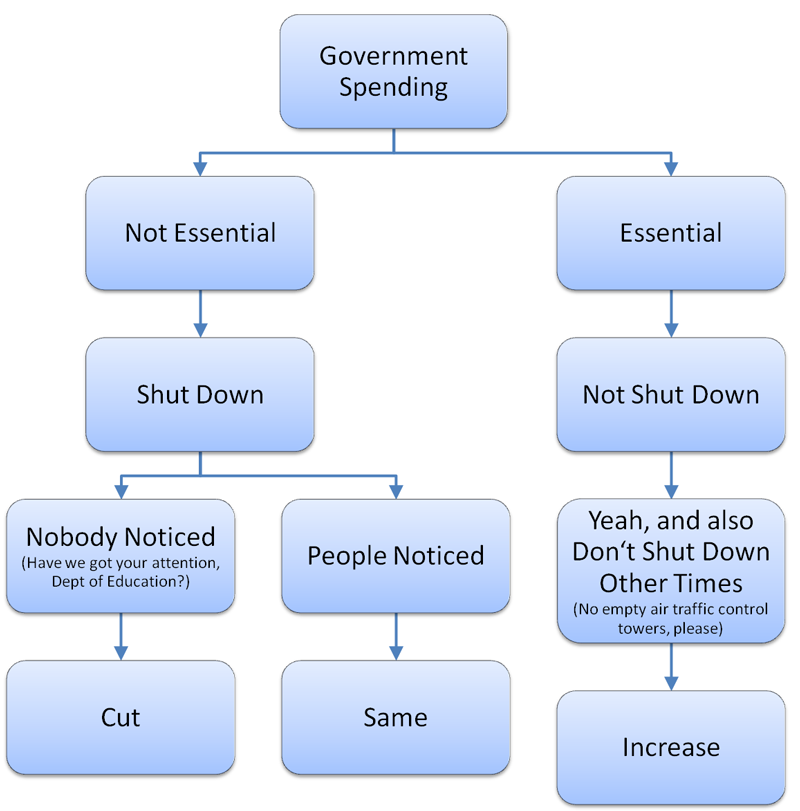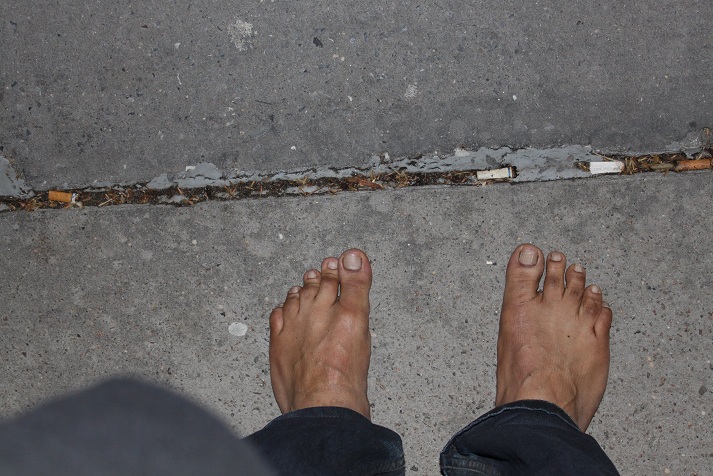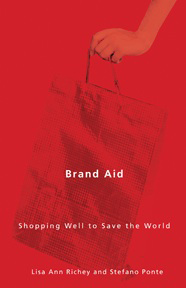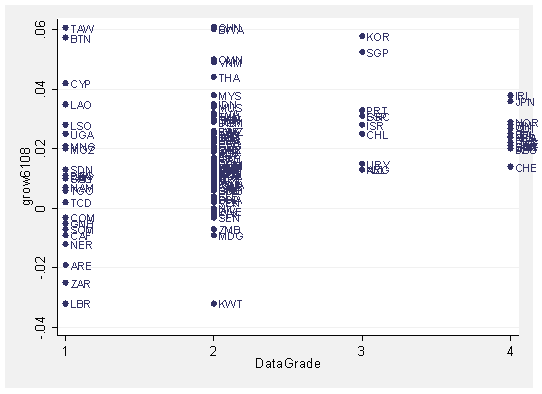Next installment in our popular (for wonks maybe?) series on the volatility of growth outcomes under autocracy:
What if we have it backward, and growth volatility causes autocracy?
The picture below shows the association between per capita growth outcomes and a measure of "individualist" values.
Once again the most striking thing is the high variance of growth outcomes under collectivist values, and a much lower variance under individualist values. Which causes which? One plausible story is that collectivist values evolve in highly volatile environments in which people long for collective insurance mechanisms -- like the family/clan/nation coercing the most successful members of the family/clan/nation to sacrifice their rewards for everyone else. In safer environments (those on the right in the graph), it's easier for individuals to assert their rights and responsibility to fend for themselves and keep the rewards of their own efforts.

Of course, individualism is also highly correlated with actually having democracy, while collectivist values predict autocracy.
We have now had in our series 3 different stories for why autocracies have higher variance of growth outcomes:
- Growth volatility under autocracy is all about the benevolence of Lee Kuan Yew versus the malevolence of Mobutu.
- It has nothing to do with autocrats, it is just there's more measurement error in low income economies (which are typically also autocracies).
- OK maybe it is autocracy, but high volatility causes autocracy, not the other way around (TODAY'S POST).
The present author seems to have evolved beyond the dreaded two-handed economist to being a three-handed economist. Actually, there are other tests we could do to discriminate between stories or to apportion how much each accounts for the outcome.
But I have a different point -- we are often tempted to stop too soon, to tell just ONE story that could --horrors! -- depend partly on our self-interest and preferences.
Story #1 has been the default most-popular-girl-in-the-class so far. It's convenient for the autocrats(!), and for those who aspire to advise them and give them aid.
Stories #2 and #3 are more about the limits of expert knowledge and influence, which sounds like yet another way to be unpopular.
Technical Notes:
“Individualism” is obviously a slippery concept both in theory and in measurement. This exercise (from work in progress by this author) tried to get a rough measure by averaging over 3 independent measures: (1) the World Values Survey asks each respondent (Question E037) to identify themselves on a 1 to 10 scale from People Should Take More Responsibility (1) to Government Should Take More Responsibility (10). (2) Hofstede (1980,2001 ) surveyed IBM employees in a sample of countries around the world and used factor analysis on the answers to construct a spectrum from “collectivist” to “individualist” values. (3) Schwartz (1994, 1999) used answers on a survey of values from 15,000 schoolteachers around the world to construct a measure going from “person as embedded in the group” to “person viewed as autonomous…who finds meaning in his or her own uniqueness.” Each measure was normalized to have mean zero and standard deviation 1 where positive values are in the direction of more individualism, and then a summary measure used an average over any or all of the 3 measures available for each country.
References
Hofstede, Geert H., 1980. Culture’s Consequences: International Differences in Work-Related Values. Sage, Thousand Oaks, CA.
Hofstede, Geert H., 2001. Culture’s Consequences: Comparing Values, Behaviors, Institutions, and Organizations Across Nations, second ed. Sage, Thousand Oaks, CA.
Schwartz, Shalom H., 1999. Cultural value differences: Some implications for work. Applied Psychology International Review 48, 23–47.
Schwartz, Shalom H., 1994. Beyond individualism/collectivism: new cultural dimensions of values. In: Uichol, Kim, Triandis, Harry C., Kagitcibasi, Cigdem, Choi, Sang-Chin, Yoon, Gene (Eds.), Individualism and Collectivism: Theory, Method, and Applications. Sage, Thousand Oaks, CA.
 From Aid to Equality
From Aid to Equality





 From the brilliant
From the brilliant 







